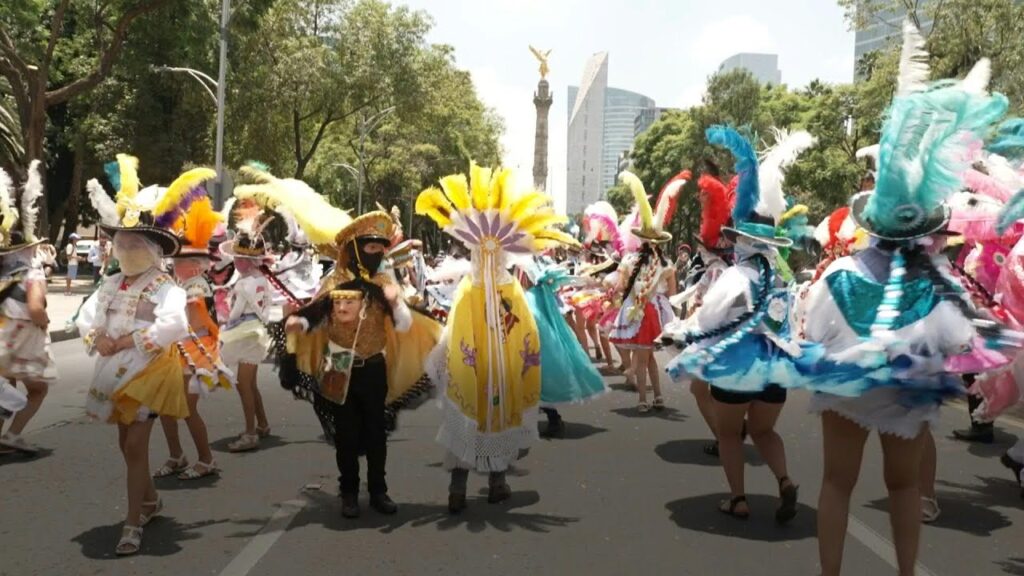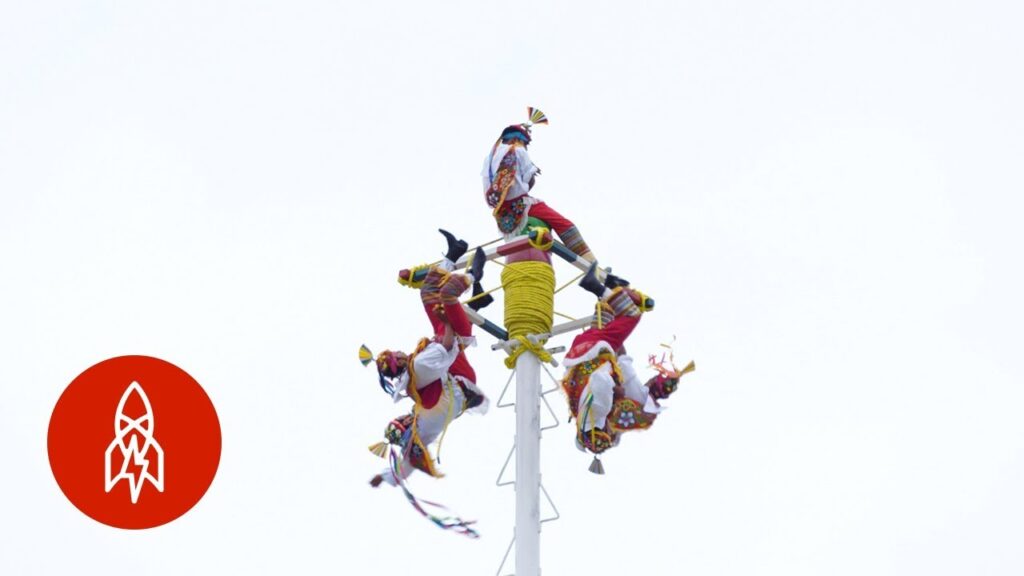Understanding the Significance of the Ceremonial Staff in Indigenous Cultures of Mexico
The ceremonial staff, often observed in the vibrant cultural spectacles of Mexico’s indigenous communities, is much more than a mere decorative artifact. It is a profound symbol of authority and spiritual significance. Among the diverse indigenous groups, such as the Mayas, Nahuas, and Zapotecs, the staff is typically seen during rituals and is wielded by leaders and shamans. The intricate designs and materials used in the creation of each staff are distinctive to the particular community and often represent the unique beliefs, histories, and cosmos visions of the indigenous peoples. The staff serves as a bridge between the earthly and the spiritual realms, imbued with the power to communicate with deities and ancestral spirits.
In many indigenous ceremonies, the ceremonial staff is used to mark the rhythm of dances, to bless participants, or even to perform healings. The staff’s presence is believed to invoke the protection and guidance from the spiritual world, ensuring the ceremony’s integrity and sacredness. Each movement made with the staff during a ritual is a language of its own, expressing respect for the earth, communion with nature, and a plea for cosmic harmony. Elders who possess a staff are viewed not just as community leaders but as keepers of ancestral knowledge, with the staff symbolizing a lineage of wisdom passed down through generations.
Understanding the role of the ceremonial staff also involves appreciating the material from which it is made. Commonly carved from wood sourced from specific trees deemed sacred, these staves are often adorned with elements such as feathers, stones, and carvings. These materials are not chosen at random; each component holds meaning and contributes to the staff’s overall purpose. For instance, feathers may symbolize communication with the sky, while particular stones might be used for their perceived healing properties. The act of crafting a staff is itself a ritual, requiring deep knowledge, patience, and a spiritual connection to the elements being used.
The Historical Roots of the Ceremonial Staff in Mexico’s Indigenous Communities
In the rich tapestry of Mexico’s indigenous cultures, the ceremonial staff stands out as a symbol of authority and tradition. Often carved from wood or fashioned from precious metals, these staffs are not merely ornamental; they are imbued with the spiritual and historical essence of the community. Passed down through generations, the staffs tell stories of the past, tying today’s leaders to the ancient lineages and practices of their ancestors. Their intricate designs and deep significance make them key items in traditional ceremonies, where they act as conduits for the cultural wisdom preserved over centuries.
The use of ceremonial staffs dates back to the pre-Columbian era, where they were utilized by the leaders of various indigenous tribes as markers of their status and power. They were often depicted in the hands of deities or high-ranking individuals in the vivid frescoes and intricate stone carvings that have survived to this day. In many communities, the right to carry a staff was earned through deep understanding and commitment to the tribe’s customs and beliefs, making it a revered article passed on with solemnity and respect.
In contemporary times, the ceremonial staff continues to play a crucial role in indigenous community events, including dances, religious rituals, and the inauguration of new leaders. Each staff’s unique decorations – from colorful feathers to symbolic carvings – reflect the specific beliefs and history of the community it represents. As these communities work to preserve their traditions in the face of a rapidly changing world, the staffs stand as proud emblems of resilience and continuity. They are not simply relics of a bygone era but are an ongoing testament to the rich cultural heritage of Mexico’s indigenous peoples.
The Ceremonial Staff: A Symbol of Authority and Tradition Among Mexico’s Indigenous Peoples
In the rich tapestry of Mexico’s indigenous cultures, the ceremonial staff stands out as an enduring emblem of leadership and heritage. Handcrafted with precision and care, each staff is more than a physical object; it’s a repository of tradition, passed down through generations. Intricately carved and adorned, these staffs are wielded by elders and chiefs, signaling their position and their community’s respect. The designs often draw from natural elements, spiritual motifs, and ancestral symbols, encoding the beliefs and history of a people within their polished grains.
The ceremonial staff is not a mere decorative artifact; its use is deeply embedded in indigenous customs and governance. During community assemblies, or ‘juntas’, leaders hold their staffs as they articulate decisions, guide discussions, and invoke the wisdom of ancestors. In many ways, these staffs function as a baton of authority, a tangible link between the spiritual and practical aspects of indigenous leadership. They remind participants of the duties and the ancestral laws governing their deliberations and the deep-seated reverence for communal harmony and natural balance.
Across Mexico’s diverse indigenous communities, the staff’s significance is universally recognized, yet its form and symbolism are uniquely adapted to each culture. The Maya of the Yucatan, the Zapotec of Oaxaca, and the Raramuri of Chihuahua, for instance, each have their own distinct style of ceremonial staffs, reflecting their specific cosmology and social structure. This diversity in design highlights the rich cultural variety within Mexico’s indigenous populations, and the staff serves as a visible manifestation of each group’s identity and values.
Today, these ceremonial staffs are not only used in traditional community gatherings but have also become powerful symbols in broader struggles for indigenous rights and recognition. They are held aloft in protests and ceremonies, signifying solidarity among indigenous groups and the enduring fight to preserve their cultures and lands from external pressures. The staff symbolizes a resilient spirit, the continuing relevance of indigenous wisdom, and an invaluable part of Mexico’s cultural mosaic.
Exploring the Cultural Meanings Behind Ceremonial Staffs in Mexican Indigenous Rituals
In the rich tapestry of Mexican indigenous cultures, ceremonial staffs are a prominent emblem of authority and tradition. Often intricately carved and decorated, these staffs serve as more than mere symbols; they are deeply ingrained in the spiritual and communal practices of various indigenous groups. Each staff carries with it stories of the past, mythologies of creation, and the enduring spirit of the people who uphold these ancient customs.
The making of a ceremonial staff is a sacred process that typically involves the collaboration of skilled artisans and community leaders. Materials are not chosen at random; they are selected for their spiritual significance. For instance, wood from the copal tree might be used, as it is thought to be a conduit for communication with the gods in several Mesoamerican cultures. The act of crafting the staff becomes an act of reverence, a tangible connection between the community and the divine.
In the context of indigenous rituals, the bearer of the staff often assumes the role of a guide or mediator between the physical and spiritual realms. During dances, ceremonies, and various festivals, the staff is held with respect and is sometimes believed to carry the power to heal, protect, and bestow blessings upon the participants. It is not merely an object that is carried, but a participant in the ceremonies, its presence as vital as that of any community member.
Moreover, the designs and iconography etched onto the staff speak volumes about the myths and legends of the culture. Iconography featuring local fauna, like the jaguar or eagle, represent strength and power, while depictions of maize and other crops may symbolize fertility and abundance. These staffs tell stories without words, bringing to life the rich oral histories that have been passed down through generations.
The role of ceremonial staffs in rituals also extends to their function as emblems of communal governance and social order. They serve as a reminder of the laws and moral codes that govern daily life within the community, standing as an extension of the authority of chiefs and elders. In public meetings and council gatherings, the staff signifies the presence of leadership and the weight of tradition, bridging the past with the present in the ongoing journey of the indigenous peoples of Mexico.
How Ceremonial Staffs Represent the Beliefs and Values of Mexico’s Indigenous Tribes
Ceremonial staffs have long been a symbol of authority and spiritual significance among Mexico’s indigenous communities. Each staff is meticulously crafted to represent the unique beliefs and values of the tribe. For instance, the designs often incorporate natural elements like feathers, stones, and carvings of animals which are tied to the tribe’s mythology or environment. These elements are not mere decorations; they hold within them a narrative of the tribe’s cosmology, connecting the bearer with their ancestral spirits and the forces of nature that are sacred to their cultural practices.
The use of color in these ceremonial staffs also holds deep meaning, with each hue corresponding to specific aspects of tribal life. Red may signify blood, war, or the earth, while blue can represent water, sky, or the divine. Through these colors, the staffs communicate a visual story about the tribe’s relationship with the world, their ancestors, and the gods they worship. The crafting process itself is a ritual, involving prayers and ceremonies to imbue the staff with the tribe’s collective hopes, dreams, and prayers.
Moreover, when leaders preside over ceremonies or council meetings, they hold their staffs as emblems of their responsibility to the community and the land. These staffs are not only symbols of power; they serve as reminders of a leader’s duty to make decisions that align with the tribe’s values and the welfare of future generations. In essence, ceremonial staffs are more than ornate objects; they are tangible expressions of identity, governance, and continuity within Mexico’s indigenous cultures.
The Role of Ceremonial Staffs in Modern Indigenous Ceremonies in Mexico
In the tapestry of Mexican indigenous tradition, ceremonial staffs are emblematic artifacts that have endured the test of time, retaining their symbolic significance and function. These staffs, often intricately carved from wood and adorned with elements sacred to the culture they represent, are not mere objects of aesthetic appeal; they serve as vital conduits for spiritual guidance and tribal leadership in modern rituals and ceremonies. Indigenous groups across Mexico, such as the Maya, Nahuatl, and Purépecha, continue to integrate ceremonial staffs in their contemporary religious and cultural gatherings.
Ceremonial staffs in Mexico are often seen as extensions of authority and leadership. During significant community events, leaders or shamans carry these staffs as symbols of their rightful place and responsibility within their society. The staffs serve as tangible representations of power and are frequently used to bless attendees, invoke ancestral spirits, or channel cosmic energies. The staff is not only an object of reverence but also an instrument that connects the physical and spiritual worlds, enhancing the communal bond during indigenous ceremonies.
The crafting process of ceremonial staffs is a ritual in itself, imbued with meaning and purpose. Artisans who are well-versed in traditional methods and lore create these objects with the utmost respect and intention. The selection of materials, the motifs carved into the wood, and even the colors applied are all significant and often align with the myths and stories of the culture. The aesthetic elements and specific designs vary, reflecting the diverse beliefs and practices among Mexico’s indigenous populations, but the intention behind them remains steadfastly spiritual and unifying.
In addition to their role in ceremonial contexts, modern indigenous groups often use ceremonial staffs to assert their cultural identity and advocate for their rights. In political gatherings, marches, and negotiations, these staffs symbolize the enduring presence and resilience of indigenous traditions. By carrying them into the 21st century, the indigenous communities of Mexico declare the ongoing importance and vitality of their ancient customs, ensuring that their cultural heritage remains vibrant and influential in today’s ever-evolving society.



